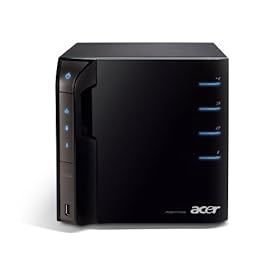 I’ve noted previously that there were a few things I like about Windows 7 here and here. But media is what I’m really most interested and the new OS release offers some very slick support for content.
I’ve noted previously that there were a few things I like about Windows 7 here and here. But media is what I’m really most interested and the new OS release offers some very slick support for content.
The next area of Windows 7 to mention are in the media capabilities – particularly in the Media Streaming with Windows 7 – as noted in Jon & Steven’s most excellent E7 adventure, er, Blog this week.
We’ve blogged about a number of features related to home networking and media in Windows 7. A scenario which brings all these together in a pretty cool way is Media Streaming. This scenario allows you to use a Windows 7 PC as a hub for media sharing—where you can share media with other PCs and devices on your home network via streaming, and even stream this information securely over the internet. Scott Manchester on the Devices & Media program management team coordinated this post, but as you will see it represents work across the Core User Experience, Media Center, Networking, and even Windows Live chose to take advantage of the new APIs in this scenario.
Two of my favourite features in Windows 7 (especially in the RC) are the HomeGroup (for managing multiple PCs in the home) and Play To features (which allows you to locate media on your connected devices and "play to" the compatible devices you choose). And be sure to see LifeHacker’s post on Windows 7’s Best Underhyped Features. with nods to file management, jump lists, rotating wallpaper and streamlined UAC.
But in particular, let’s boil down some practical benefits to two words: media formats.
How many times have you taken video from a new handheld video device, or off of recordable media, and found that you required a codec to play it back? If you stick to the basics, probably not too often, but it happens. Seems like I would often run into issues with some of the audio files created in MPEG2 and MPEG4 camcorders. I also recall folks lamenting native support with the AVCHD format used by many popular HDD-equipped camcorders.
But as Scott, Tim and the Devices & Media team note below, Windows 7 lets you enjoy the media you want without troubling you to do Internet searches for codecs or file types that may be Greek to you…
In addition to supporting local playback of new formats, we can also ensure that the content will play on devices that may not support the codec, bit rate, container, or format of that content. We accomplish this by using the new transcoding support in Windows 7.
Let’s say for instance you have a DivX movie you want to watch on your new DLNA certified television which only supports WMV and MPEG2. Windows 7 will determine the capability of the TV (codec, bit rate, etc.) and dynamically convert the DivX video to a format the TV can play. The general rule of thumb is: if Windows Media Player can play the content on the PC then the content will almost always play back on the network connected device. Bandwidth estimation techniques are used for media streaming within the home and over the internet, which enables Windows 7 to transcode using the most optimal format and bit rate.

For me, this means no more searching for esoteric codecs.
I’m also happy to note the Digital Living Network Alliance Support (DLNA) in Windows 7. DLNA is consumer electronics industry consortium that promotes improved interoperability of digital content across networks, for sharing music, photos, and videos over multiple devices in, around and outside the home.
Windows 7 implements several of the DLNA device roles and it also implements the DLNA protocols required for communications and media exchange. With Windows 7, your PC will be able to interoperate with a broad variety of DLNA certified devices like TVs, stereo systems, cell phones, DVRs, game consoles, etc.
Tags: Windows 7, media.
Clubhouse Tags: clubhouse, Challenge-Windows 7, media, Windows 7, video, HomeGroup, Play To
 Bookmark this on Delicious
Bookmark this on Delicious 
Also available via http://bit.ly/usjYD
 OK, geek moment before the start of the long weekend here in the States. I’m very excited as the new Acer Aspire AH340-UA230N Windows Home Server is outfitted with 2GB of memory and a 1 TB Hard Drive, leaving 3 open slots for additional hard drives to be easily added.
OK, geek moment before the start of the long weekend here in the States. I’m very excited as the new Acer Aspire AH340-UA230N Windows Home Server is outfitted with 2GB of memory and a 1 TB Hard Drive, leaving 3 open slots for additional hard drives to be easily added. 

